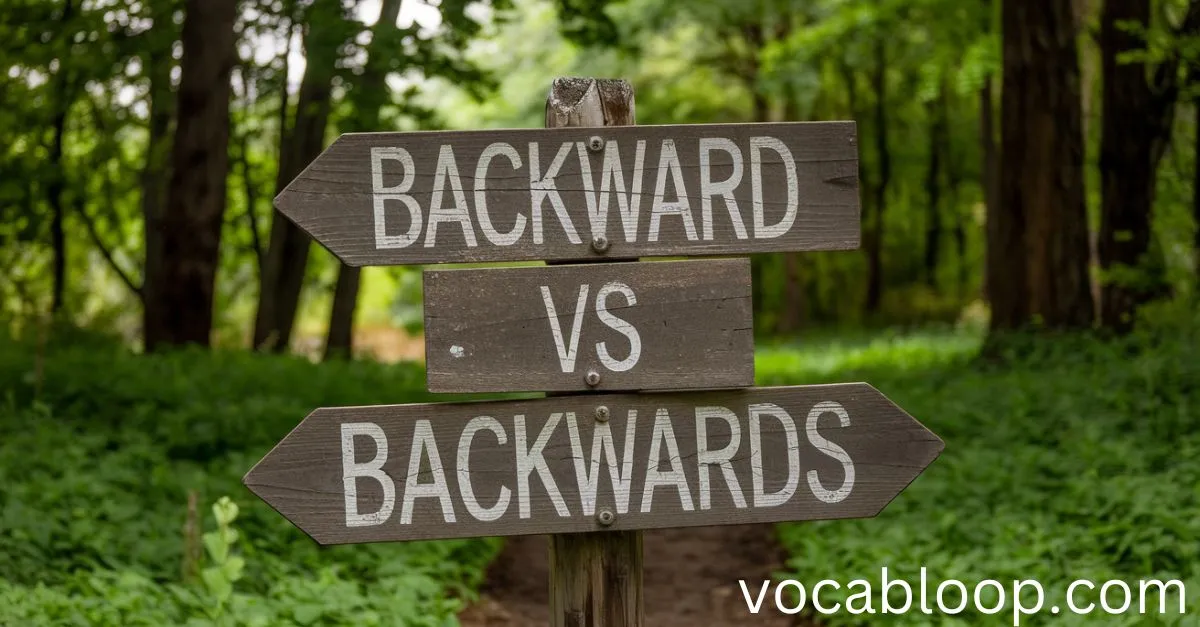The commonly confused words “backward” vs “backwards” often cause frustration for English speakers. Whether you’re describing a reverse direction, a motion done in reverse, or a regressive term, choosing the right form is essential.
This blog explores the grammatical differences, regional preferences, and correct usage of these terms in American English and British English. By the end, you’ll know when to use “backward” or “backwards” confidently. Dive into the meanings, origins, and usage of these words to clarify the confusion and help you avoid common mistakes.
What Is the Confusion Between Backward vs Backwards?
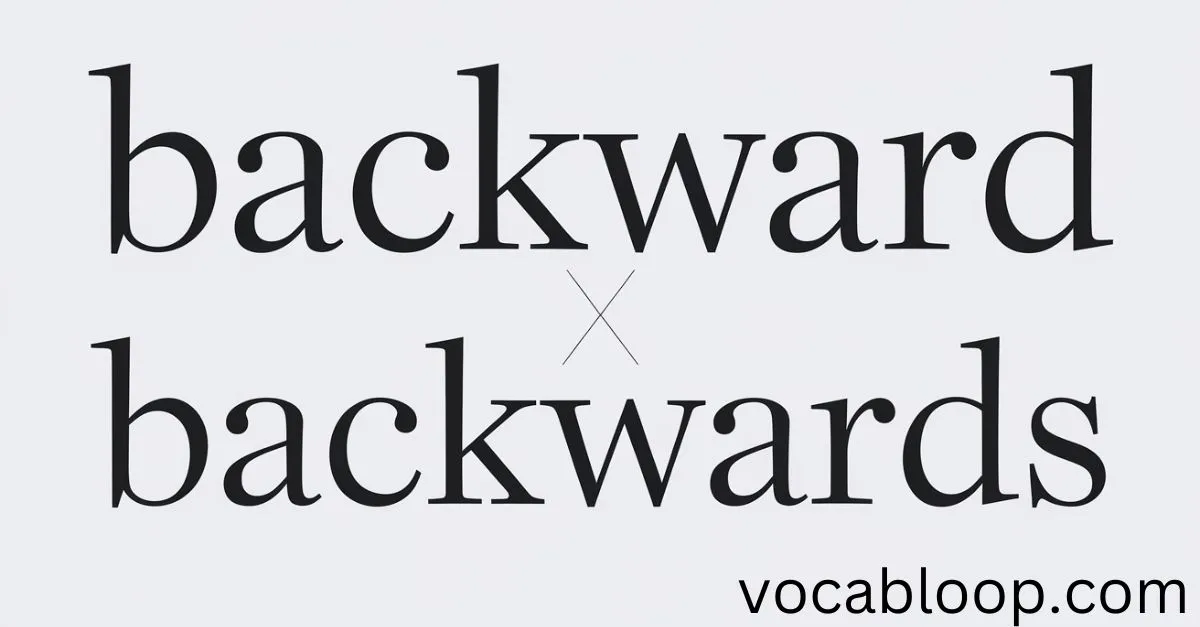
The confusion stems from regional variations and differing uses in English-speaking countries. Both “backward” and “backwards” function as adverbs, describing a reverse movement or opposite direction. However, their use depends on whether you’re speaking American English or British English.
In American English, “backward” is more common and considered standard. Meanwhile, in British English, “backwards” is often preferred. The terms share meanings but carry subtle differences in tone and context.
What Is Backward?
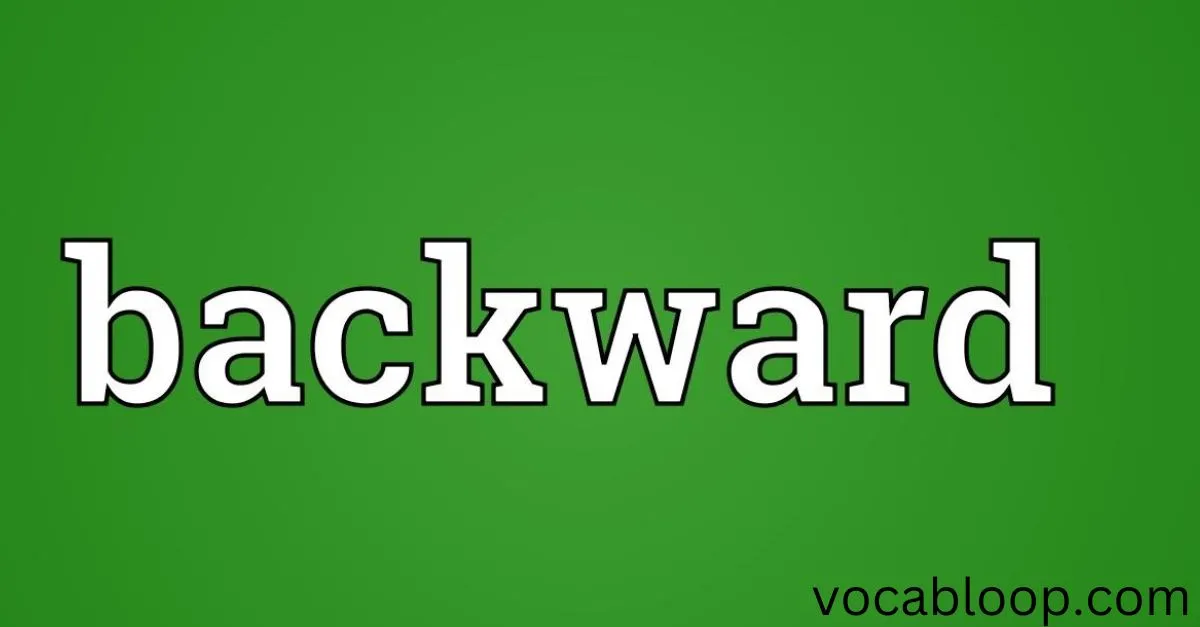
“Backward” is both an adjective and an adverb, depending on its usage. As an adjective, it describes something in a reverse direction, regressive, or behind in development. For instance, “She took a backward step” or “His views are backward.” It can signify a lack of progress or describe something opposed to forward motion.
As an adverb, “backward” indicates movement toward the rear or a position away from the front, as in “He fell backward.” This form is predominantly used in American English, making it the standard choice over “backwards” for both adverbial and adjectival contexts.
Is the Word Backward Correct?
Yes, “backward” is correct, especially in American English. It describes a backward motion, a developmental setback, or an opposite progress. Its primary use is as an adverb, but it can also function as an adjective in certain contexts.
Definition
The term “backward” refers to something moving or directed in reverse direction. It can describe a lack of progress, a decline in progress, or anything going back instead of forward.
Meaning
The meaning of “backward” can vary based on usage. It may indicate literal movement, such as walking in a backward path, or metaphorical regression, like describing a society in an advanced state that is returning to outdated practices.
Usage
“Backward” is widely used in phrases like “a backward step” to describe actions that oppose progress. In technology, backward compatibility refers to older systems’ ability to work with newer models. Here’s an example: “The software supports backward compatibility, ensuring it runs on previous versions.”
What Is Backwards?
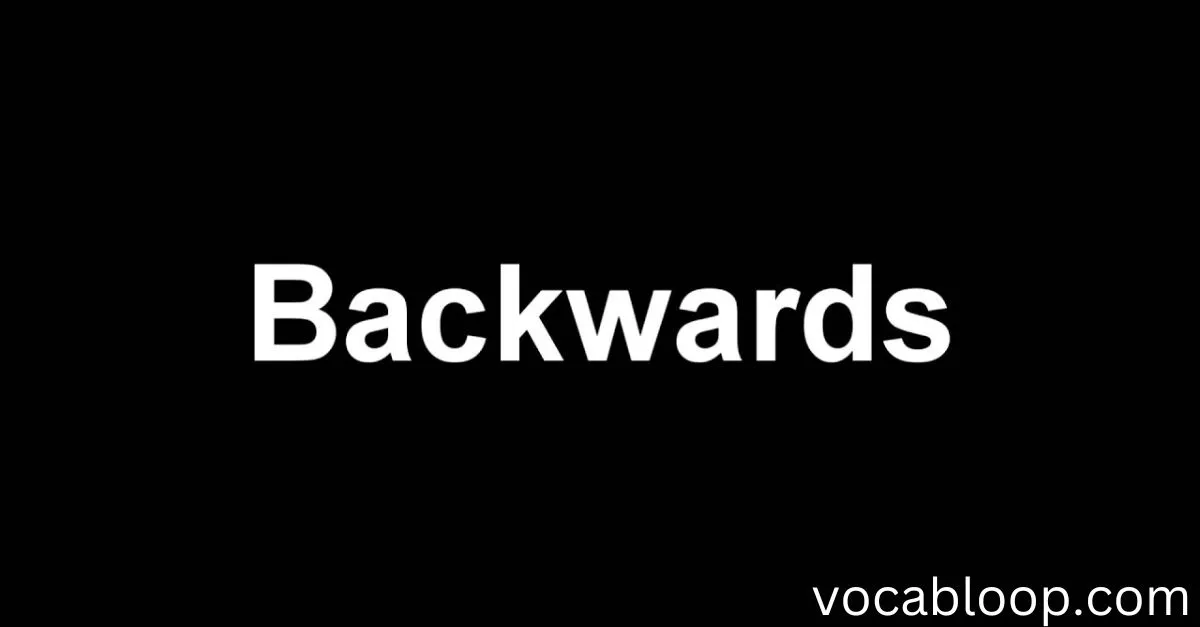
“Backwards” is an adverb that describes motion or action in a reverse direction. It indicates moving away from the front or toward the past, often used to describe physical movement, like “He stumbled backwards,” or figurative situations, such as “The policy takes us backwards.”
This term is more common in British English, where it often replaces “backward” in adverbial contexts. However, in American English, “backwards” is less frequent, with “backward” taking precedence. It should be noted that “backwards” is never used as an adjective, a distinction that helps avoid grammatical differences and ensures proper language usage.
Is the Word Backwards Correct?
“Backwards” is correct, especially in British English. It is almost identical to “backward” in meaning but slightly differs in tone and usage. While it is less common in US English, it remains widely accepted elsewhere.
Definition
“Backwards” refers to movement or direction towards the back or past. It emphasizes actions that oppose forward momentum, like retreating or stepping back.
Meaning
The term is often used to describe physical movement, like “He walked backwards to avoid stepping on the puddle.” In broader contexts, it may symbolize resistance to progress, such as clinging to outdated beliefs.
Usage
“Backwards” is frequently seen in phrases like “moving backwards” to describe literal or figurative retreat. It can also appear in sentences that describe retrograde motion or a backward travel.
Quick Summary
Here’s a quick comparison between “backward” and “backwards”:
| Aspect | Backward (US English) | Backwards (UK English) |
| Usage | Adverb, adjective | Adverb |
| Preference | American English | British English |
| Example | “She took a backward step.” | “He moved backwards.” |
Backward vs Backwards as Parts of Speech
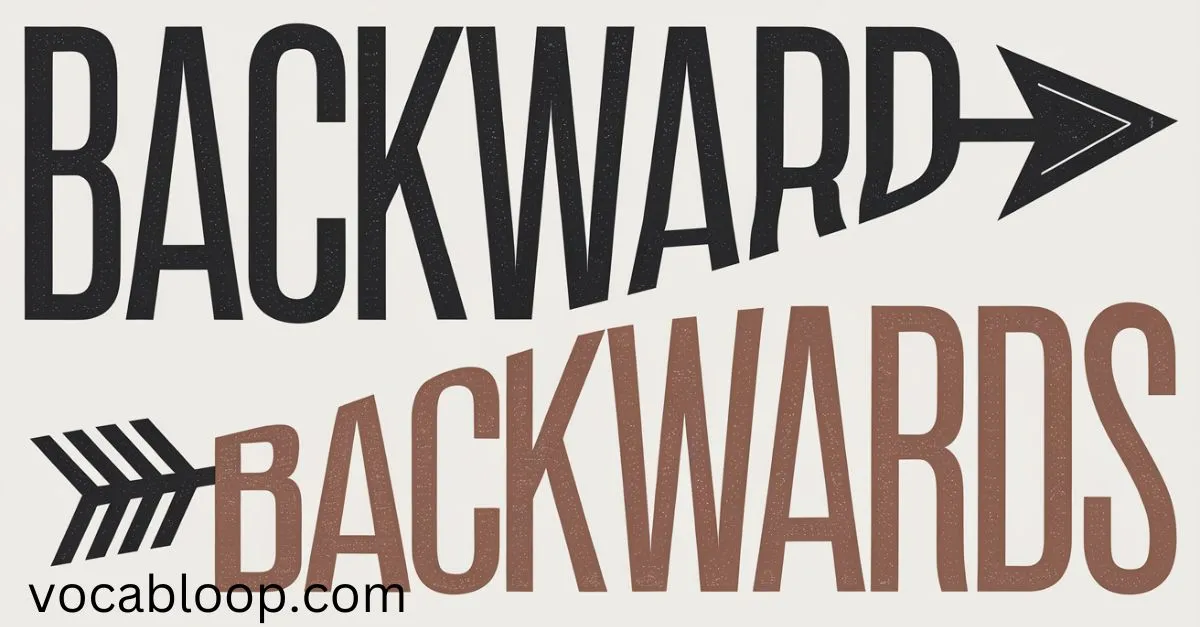
Both terms primarily function as adverbs. “Backward” can also serve as an adjective, describing things like backward steps or regressive actions. This duality makes “backward” more versatile in American English, while “backwards” remains strictly an adverb in British English.
The syntax differences reflect broader language variations between these dialects. For instance, Americans might say, “His thinking is backward,” while Britons might say, “He’s moving backwards.”
Pronunciation of Backward vs Backwards
The pronunciation of “backward” and “backwards” is nearly identical. In both cases, the stress falls on the first syllable: /ˈbæk.wɚd/ and /ˈbæk.wɚdz/. Regional accents, however, may subtly alter the ending sounds.
Which One Is More Acceptable: Backward vs Backwards?
In American English, “backward” is overwhelmingly preferred for both formal and informal contexts. Meanwhile, “backwards” dominates in British English, reflecting regional preferences. Neither is “wrong,” but the grammar comparison highlights subtle stylistic differences.
Backward in British English and American English
In British English, “backward” is less common and may sound formal or outdated. “Backwards” is more natural and widely used. In contrast, American English favors “backward” for all uses, emphasizing its dual role as an adjective and adverb.
Common Mistakes and How to Avoid Them
Many people confuse “backward” and “backwards” because they appear interchangeable. However, the most common mistake is using “backwards” as an adjective, which is grammatically incorrect. For example, in phrases like “a backward step”, the adjective form “backward” is the only correct choice.
To avoid these language mix-ups, it’s essential to match the word to its grammatical function and consider the regional dialect. Stick to “backward” for adjectives and American usage, while reserving “backwards” for adverbial use, particularly in British English.
Trick to Remember the Difference Between Backward vs Backwards
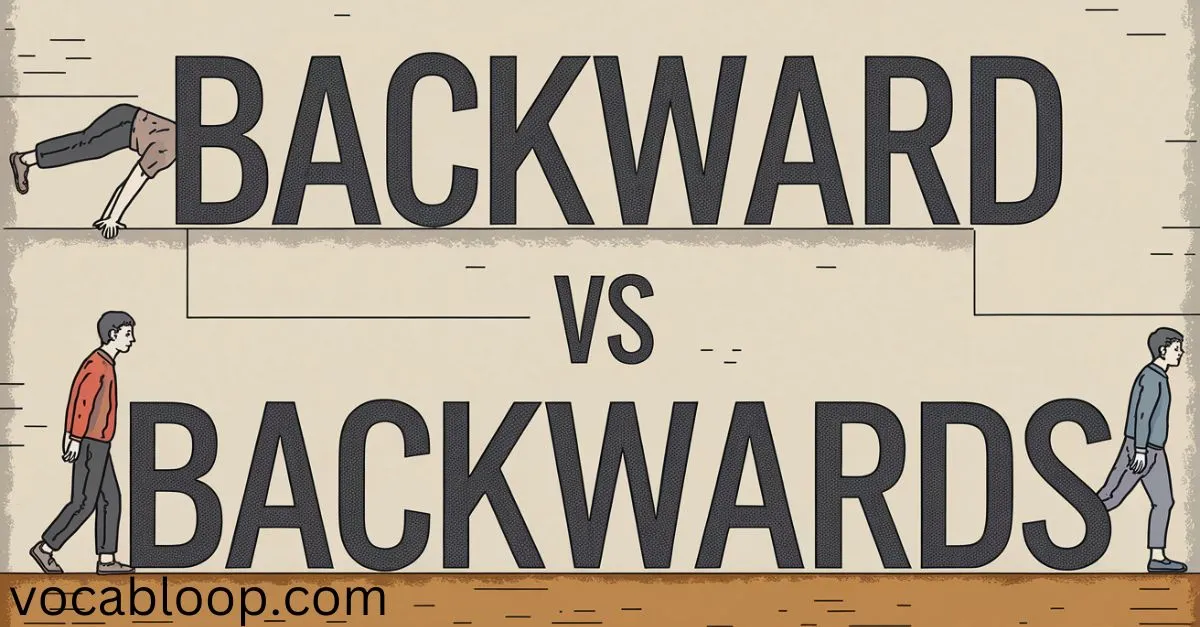
Think of “backward” as the standard in American English and “backwards” as the preferred choice in British English. To remember easily: “Backward works for American texts, while Brits lean backwards.”
This distinction reflects regional preferences and grammatical evolution, making it simple to choose the correct form based on the audience or context.
Origins of Backward vs Backwards
Backward
The word “backward” has its roots in Middle English, where it emerged by combining “back,” indicating a return or reverse direction, with the suffix “-ward,” which signifies “toward” or “in the direction of.” This construction emphasized a motion or orientation toward the rear. Historically, “backward” was used both literally and figuratively to describe movement, regression, or anything opposing forward progress. It has retained its versatility and is widely accepted, particularly in American English, as the standard form.
Backwards
“Backwards” originated along a similar path but added an -s suffix, a feature influenced by Old English grammar. This variation was part of a broader linguistic trend in UK English, where adverbs often adopted an “s” ending. Over time, “backwards” became the preferred form in British English, reflecting its regional evolution.
Synonyms of Backward vs Backwards
Backward
- Reverse
- Regressive
- Retrograde
- Behind
- Receding
- Opposite
- Declining
- Stagnant
- Backpedaling
- Deteriorating
Backwards
- Rearward
- Reversely
- In reverse
- Backtracking
- Retreating
- Backing up
- Withdrawn
- Recurring
- Retrogressively
- Oppositely
Sentences in Daily Usage of Backward vs Backwards
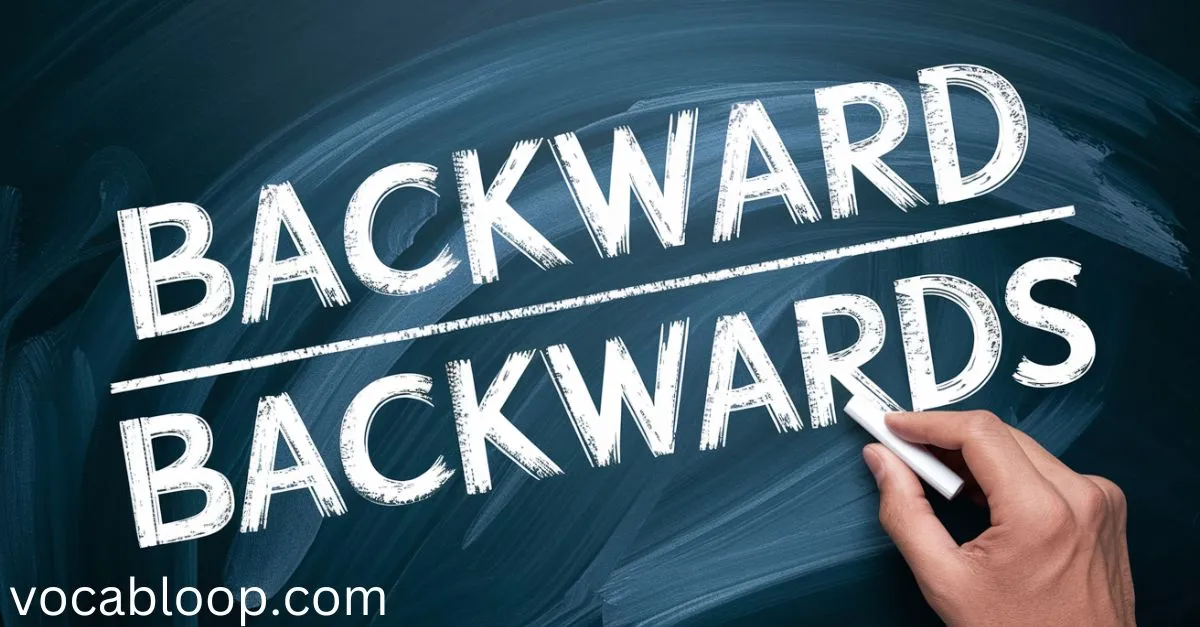
Backward
- She took a backward step to avoid the confrontation.
- His ideas about technology seem backward in today’s world.
- Moving backward in your career can sometimes lead to unexpected growth.
- The backward compatibility of the console allows old games to work seamlessly.
- Their society was criticized for holding backward views on gender equality.
- He made a backward leap to dodge the falling branch.
- The government’s policies were labeled as backward by economic analysts.
- The team faced a backward movement after losing their star player.
- Her thoughts seemed backward compared to the progressive ideas of her peers.
- The backward steps in the dance routine added an elegant touch.
Backwards
- He stumbled backwards while trying to lift the heavy box.
- The car rolled backwards down the hill when the brakes failed.
- She walked backwards to get a better view of the sunset.
- The clock ticks backwards in this peculiar art installation.
- He looked backwards over his shoulder to check for traffic.
- The movie played backwards, revealing hidden messages in the scenes.
- As they rowed, the boat moved backwards against the current.
- He flipped the card backwards to reveal its hidden side.
- The child counted backwards from ten before blowing out the candles.
- The machine operates backwards when in reverse mode.
FAQs
Is “backward” American or British English?
“Backward” is primarily used in American English.
Why are these terms interchangeable?
Both describe reverse motion but differ in dialect preferences.
Which term is more formal?
“Backward” often sounds more formal than “backwards.”
Can “backwards” be used as an adjective?
No, “backwards” is strictly an adverb.
Does spelling affect meaning?
Not significantly, but it reflects regional differences.
Conclusion
The debate between “backward” and “backwards” comes down to context and regional usage. Whether you’re writing in American English or British English, understanding the subtle grammatical differences ensures you choose the right word.
Always consider your audience and the message you want to convey. Language evolves, but clarity and precision never go out of style.

Alex Hormozi is a seasoned blogger at Vocab Loop, known for his deep insights into language, vocabulary, and grammar. With years of experience in writing, Alex shares practical tips and effective strategies to help readers improve their linguistic skills and enhance their writing abilities.

